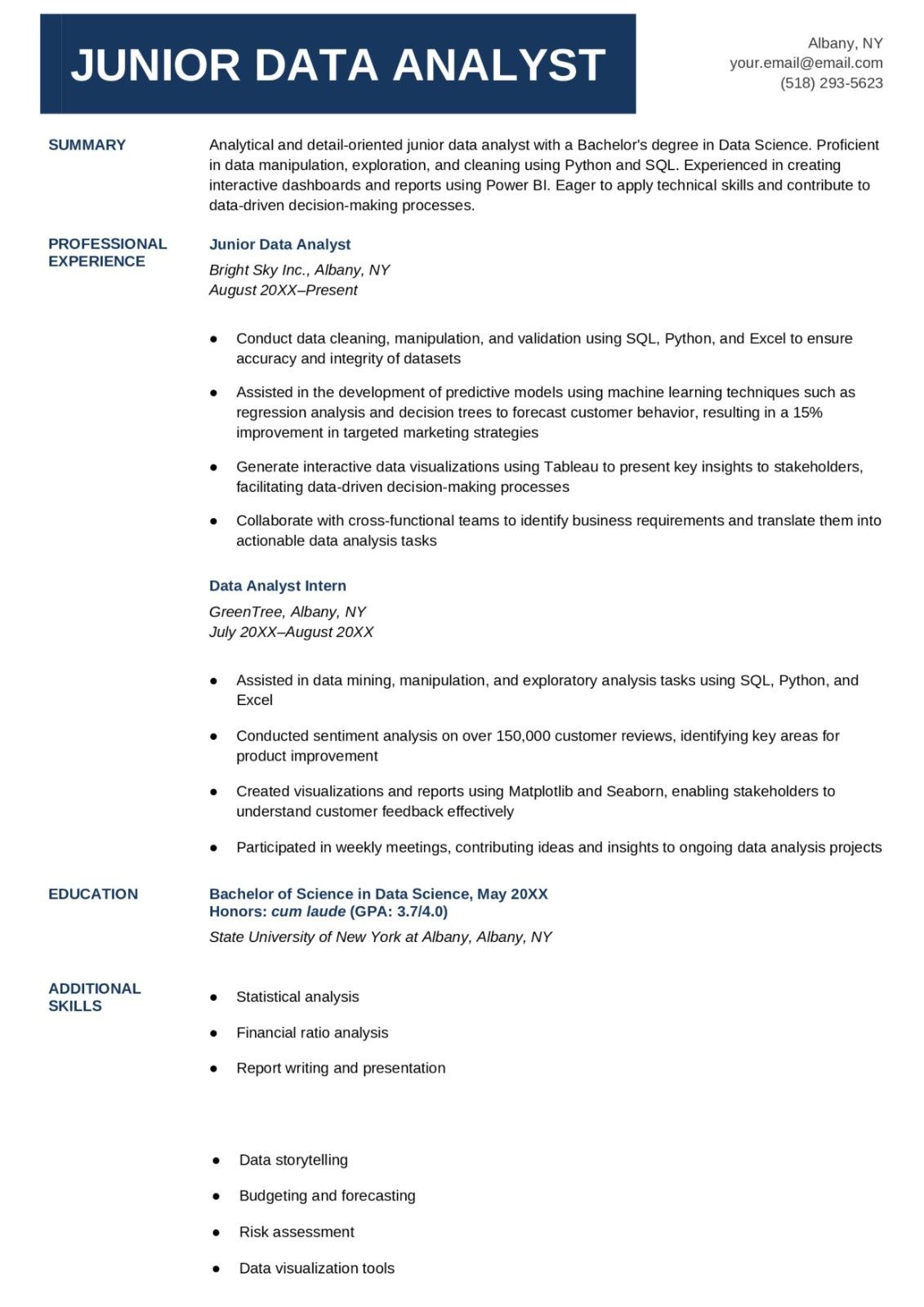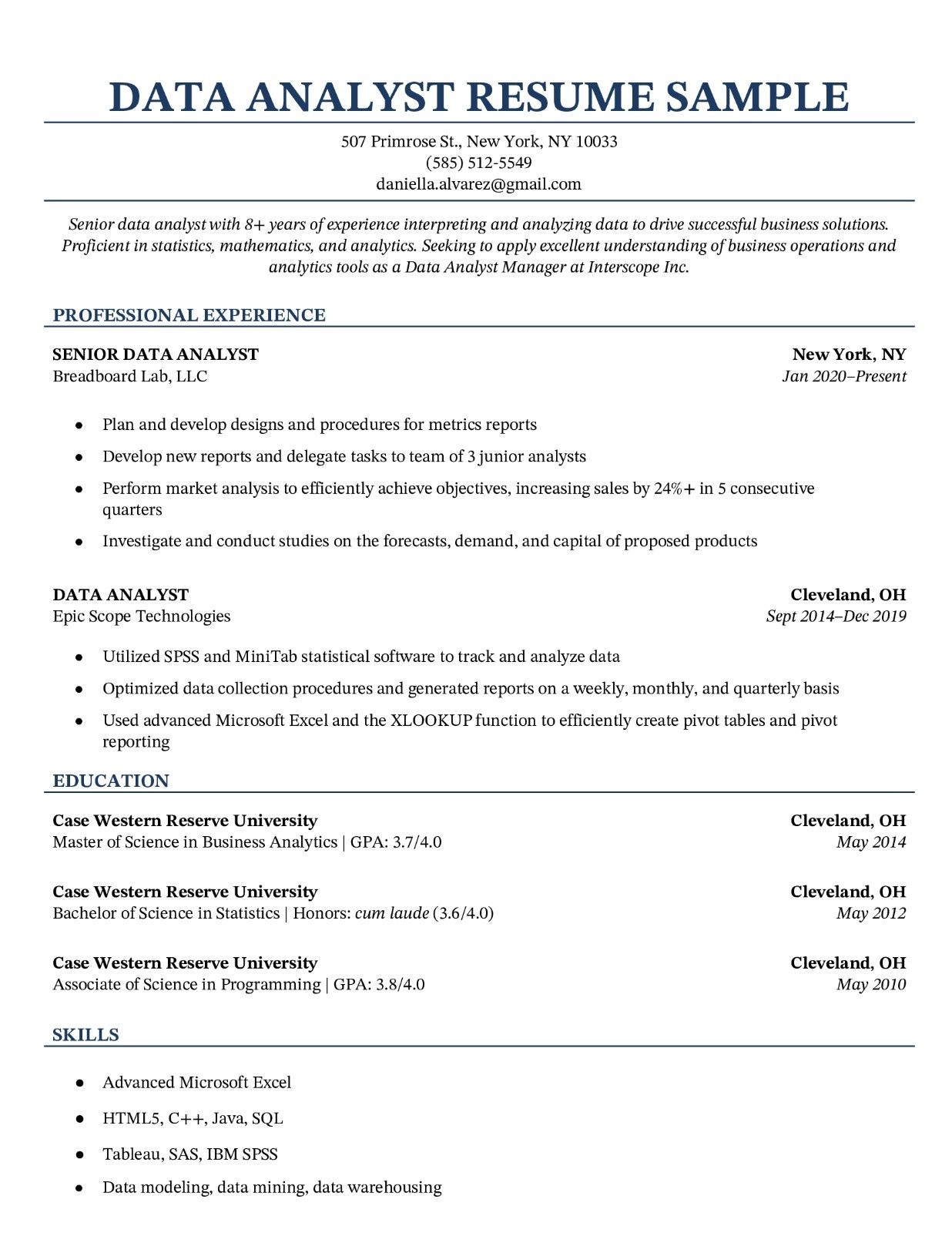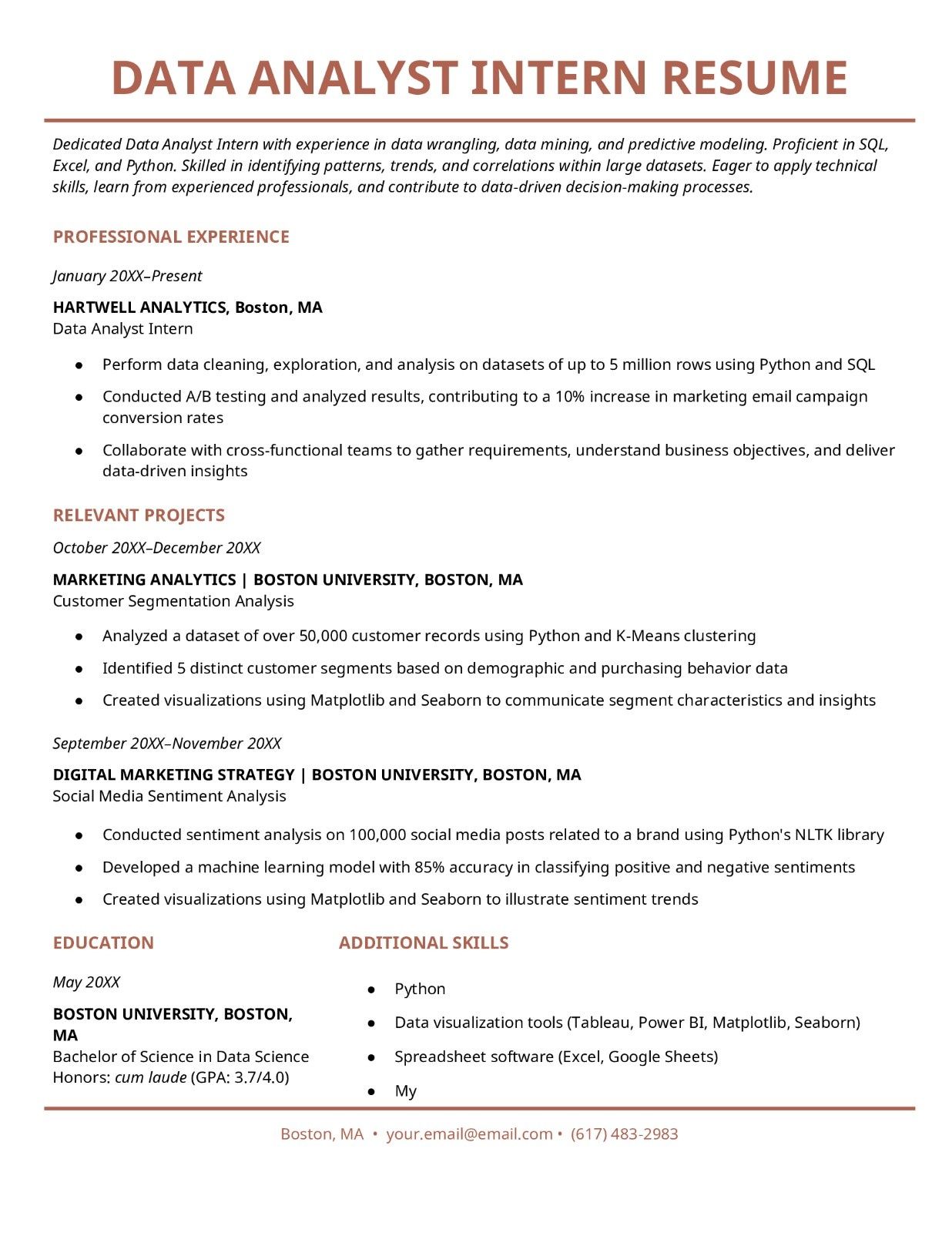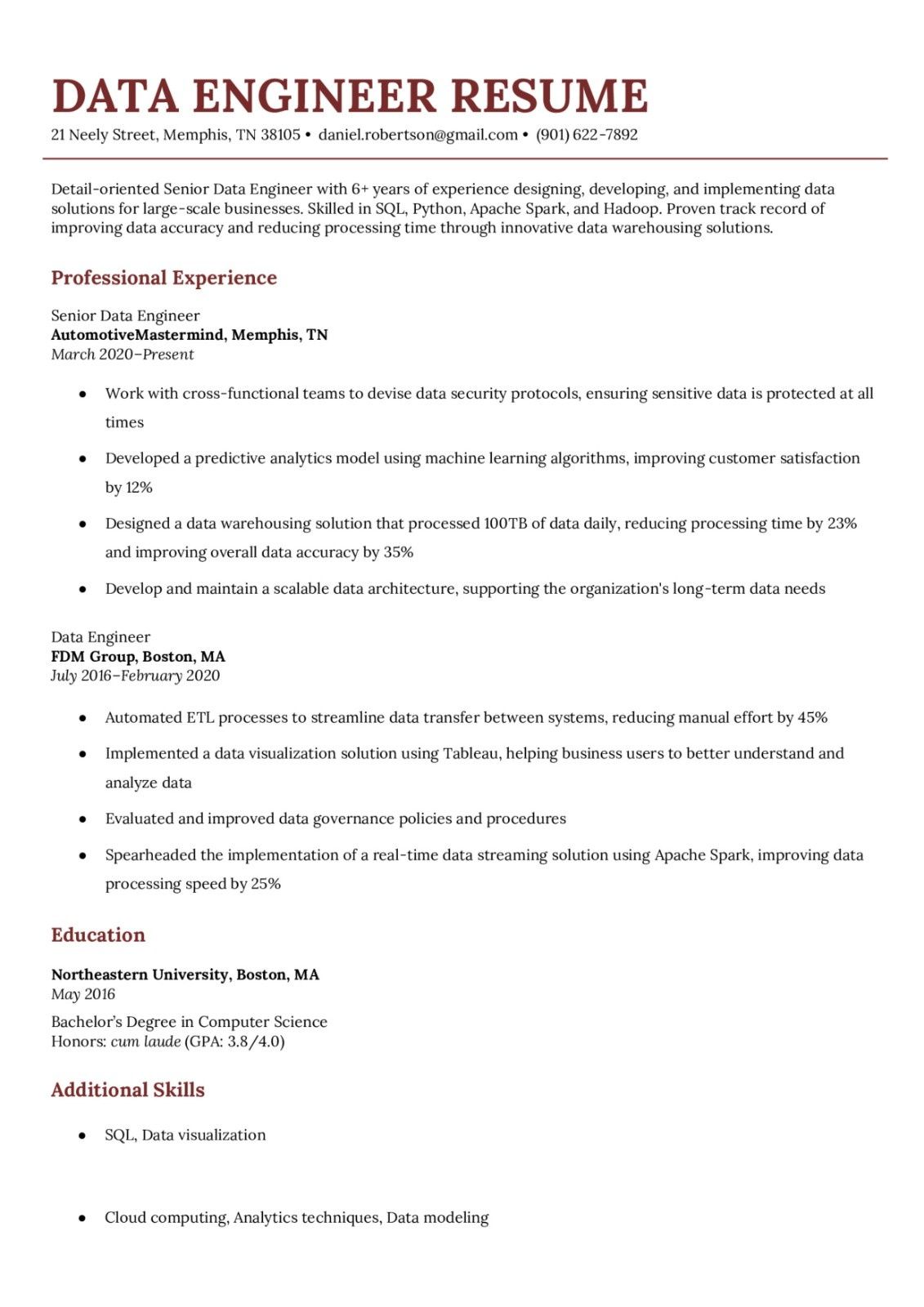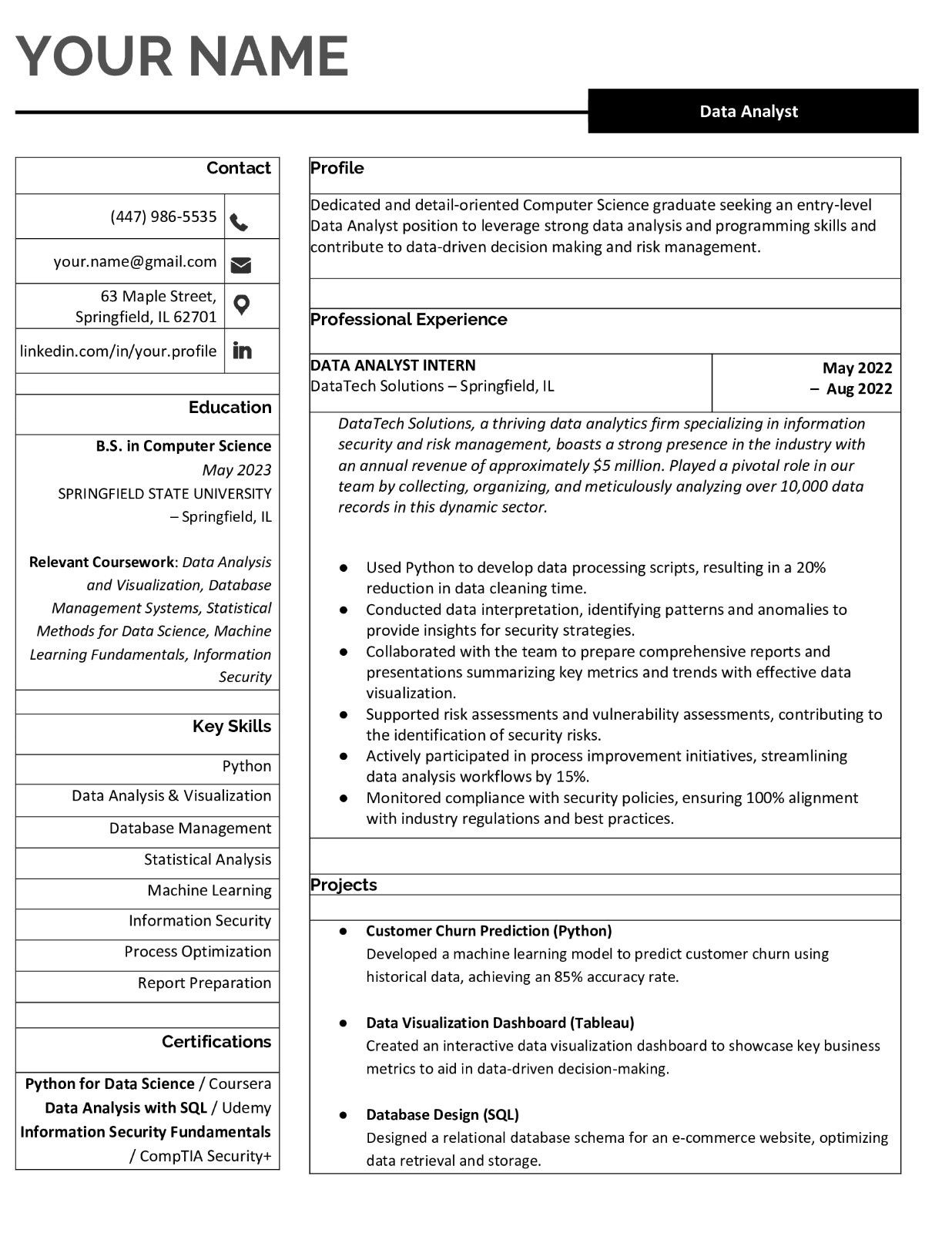Data Analyst Resume
Published on September 3rd, 2024
A data analyst plays a critical role in helping organizations make data-driven decisions by collecting, analyzing, and interpreting complex datasets. Crafting a strong resume is essential to showcase your analytical expertise, technical skills, and ability to transform data into actionable insights. In this guide, we’ll explore the key roles and responsibilities of a data analyst, provide resume templates, offer tips for standing out, and walk you through the resume-writing process step by step.
Key Roles and Responsibilities of a Data Analyst
- Data Collection and Cleaning: Gather raw data from various sources, ensuring accuracy and integrity by cleaning and organizing it for analysis.
- Data Analysis and Interpretation: Analyze data using statistical techniques, identifying trends, patterns, and correlations.
- Data Visualization: Create charts, graphs, and dashboards to visually communicate insights and findings.
- Reporting: Prepare detailed reports and presentations that explain findings to stakeholders, helping guide strategic decisions.
- Collaboration with Teams: Work closely with cross-functional teams, including marketing, finance, and operations, to provide data-driven recommendations.
- Data Tools and Software: Utilize tools like Excel, SQL, Python, R, Tableau, and Power BI to manipulate and analyze data efficiently.
- Predictive Modeling: Develop models and algorithms to forecast trends and predict future outcomes.
- Data Governance and Compliance: Ensure that data handling processes comply with regulatory standards and data privacy laws.
Data Analyst Resume Templates
Template 1
Template 2
Data Analyst Resume Tips
- Tailor Your Resume: Customize your resume for each job application, focusing on the skills and experience that match the job description.
- Highlight Technical Skills: List your proficiency in tools like SQL, Python, R, Excel, and data visualization software like Tableau and Power BI.
- Quantify Your Impact: Use metrics to demonstrate your contribution. For example, “Increased data accuracy by 25% through process optimization.”
- Showcase Soft Skills: Include teamwork, communication, and problem-solving abilities, especially when collaborating with non-technical teams.
- Use Action Verbs: Start each bullet point with verbs like "analyzed," "developed," "optimized," and "visualized" to create a dynamic, results-driven resume.
- Optimize for ATS: Incorporate keywords from the job posting to ensure your resume passes Applicant Tracking Systems (ATS).
- Emphasize Certifications: Include relevant certifications such as Google Data Analytics, Microsoft Certified: Data Analyst Associate, or Coursera’s Data Science Specialization.
Writing Your Data Analyst Resume: Section By Section
1. Contact Information
- Full name, phone number, professional email address, and LinkedIn profile or portfolio link.
2. Resume Summary or Objective
- Write a brief, powerful summary of your qualifications and career objectives.
- Example: “Detail-oriented data analyst with 3+ years of experience in data collection, analysis, and visualization. Proficient in SQL, Python, and Tableau, with a proven track record of delivering actionable insights to enhance business decision-making.”
3. Key Skills
- List both technical and analytical skills such as:
- SQL, Python, R, Excel, Tableau, Power BI
- Data cleaning, data visualization, statistical analysis
- Problem-solving, communication, collaboration
4. Professional Experience
- Highlight your work experience, starting with your most recent position.
- Use bullet points to describe your role and quantify achievements.
- Example: Data Analyst, XYZ Corporation
January 2020 – Present- Analyzed customer behavior data, leading to a 15% increase in retention rates.
- Created automated dashboards in Tableau to monitor sales trends, improving reporting efficiency by 40%.
5. Education
- List your degree(s) and any specialized courses or training in data analysis.
- Example: Bachelor of Science in Data Science, University of California, Berkeley (2018)
6. Certifications
- Include any relevant certifications to strengthen your resume.
- Example: Google Data Analytics Professional Certificate
7. Projects (Optional)
- Highlight personal or academic projects that demonstrate your analytical skills.
- Example: Built a machine learning model to predict customer churn with 85% accuracy using Python and scikit-learn.
8. Awards and Achievements (Optional)
- Mention any awards or recognitions for outstanding performance in data analysis.
9. Professional Associations (Optional)
- Include membership in relevant organizations such as the International Institute of Business Analysis (IIBA).
Authors

Soujanya Varada
As a technical content writer and social media strategist, Soujanya develops and manages strategies at HireQuotient. With strong technical background and years of experience in content management, she looks for opportunities to flourish in the digital space. Soujanya is also a dance fanatic and believes in spreading light!
Hire the best without stress
Ask us how
Never Miss The Updates
We cover all recruitment, talent analytics, L&D, DEI, pre-employment, candidate screening, and hiring tools. Join our force & subscribe now!
Stay On Top Of Everything In HR

